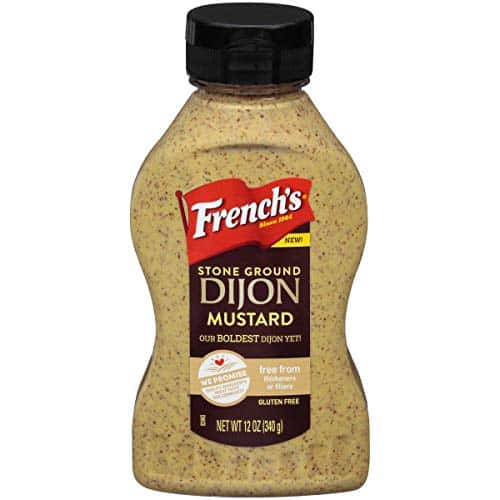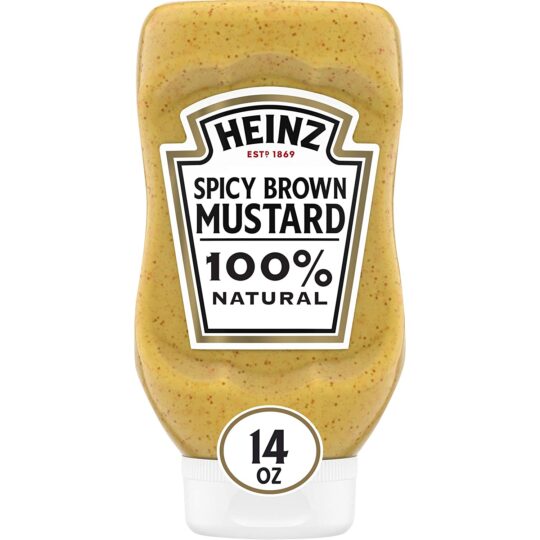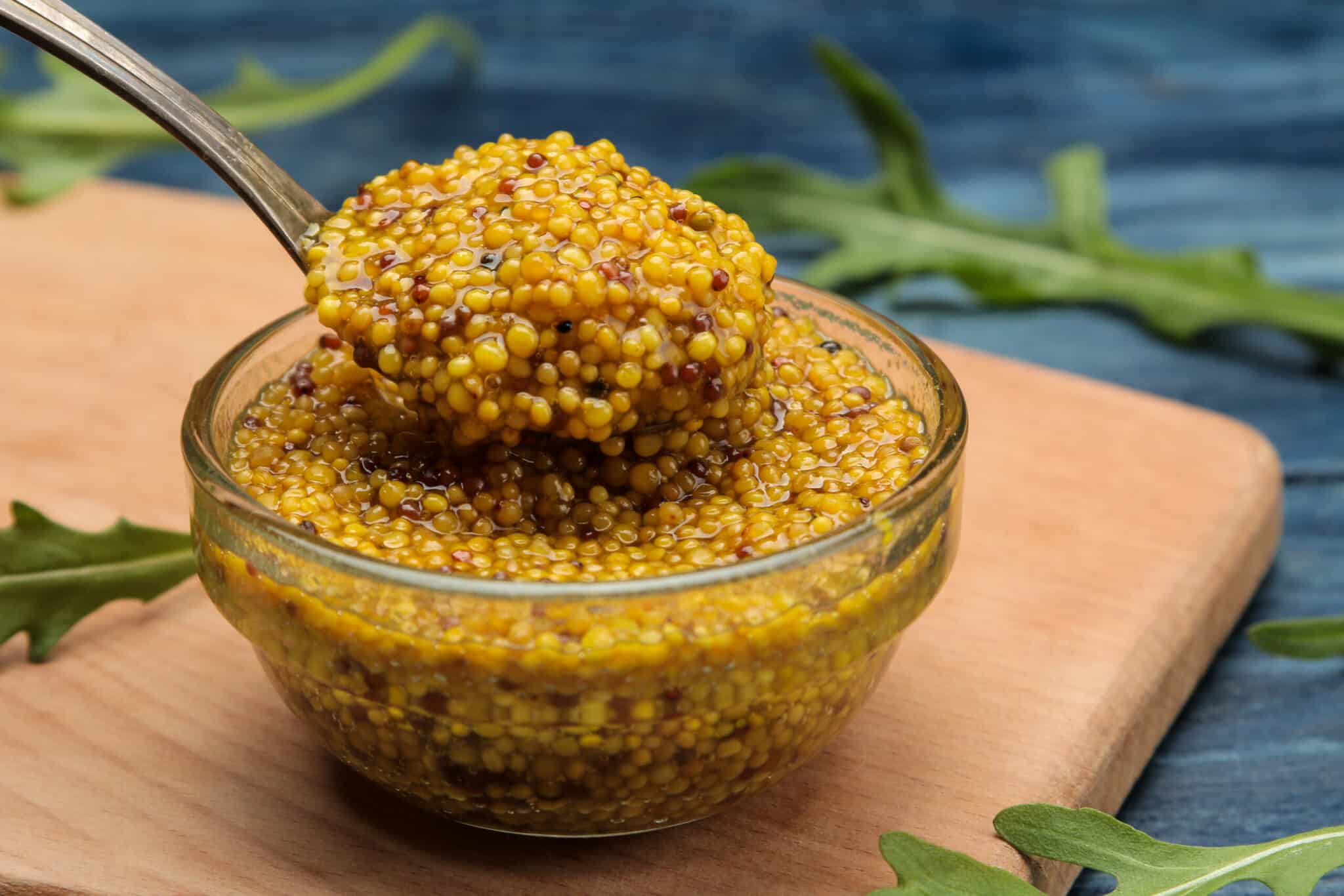Updated on April 9th, 2023
Mustard is a popular condiment used while cooking in the kitchen. This condiment is made from the mustard plant’s seeds.
This plant is linked to nutrient-dense crops like broccoli, cabbage, and Brussels sprouts and is native to the Mediterranean region. Its seeds and leaves are edible, giving it a versatile ingredient to use in your cooking.
Apart from its culinary use, mustard has a long history as a traditional medicinal treatment, reaching back to ancient Greek and Roman civilizations – and with good reason.
However, you may need to consider excellent Stone Ground mustard substitutes for days you run out of stock and your recipe calls for it.
What Is Stone Ground Mustard
Stoneground mustard is a condiment made by grinding brown mustard seeds in a stone mill to make a coarse food spread. Brown mustard seeds are ground with water and vinegar until a coarse, grainy spread is obtained.
Stoneground mustard, as the name implies, is prepared from mustard seeds that have been ground with a stone. Brown mustard seeds are pulverized using a millstone to generate stone-ground mustard. The main difference between stone ground mustard and other prepared mustards is using a millstone to generate a coarse grind.
Stone Ground Mustard, which is usually spicy, is a favorite condiment for sandwich meats and cheeses and various sausages. It goes well with robust black bread, aged cheeses with a depth of taste, and a variety of dry sausages as a condiment.
Stone Ground Mustard Uses in Recipes
Stoneground mustard, which is usually spicy, is a favorite condiment for sandwich meats and cheeses and a variety of sausages. It goes well with robust black bread, aged cheeses with a depth of taste, and a variety of dry sausages as a condiment.
See some delectable recipes you can use stone-ground mustard in:
- Sriracha Stone Ground Mustard
- Coarse-Ground Mustard Recipe
- Stone Ground Mustard Drumsticks
- Stone Ground Mustard-Braised Chicken Thighs
- Brisket With Stone-Ground Mustard Sauce
- Honey Stone Ground Mustard Chicken
- Salmon With Stone-Ground Mustard Crust
- Tarragon and Stone Ground Mustard
- Stone Ground Mustard Cheese Fondue
- Flatbread Pizza with Stone Ground Mustard, Fig, and Prosciutto
- Stone-Ground Mustard and Apricot Salmon
- Honey-Mustard Salad Dressing
- Stone Ground Mustard Herring Canapés
- Creole Mustard
- Slow Grilled King Salmon with Stone-Ground Mustard
Stone Ground Mustard Substitutes
Now that you have garnered more knowledge about stone-ground mustard, I believe it is about time you learn about relevant and reliable stone-ground mustard for days when you are in a pinch.
Dijon Mustard
Dijon mustard is the best substitute for stone ground mustard, especially since brown mustard seeds are used to make Dijon mustard and stone ground mustard.
Dijon mustard is a type of prepared mustard that is used in vinaigrettes and sauces, as well as as a sandwich’s final touch. It is a pale yellow, not the vivid yellow of traditional American mustard. “A La Dijonnaise” refers to French-inspired recipes that include Dijon mustard as an ingredient.
Because many seeds are left intact rather than crushed to release the spice and flavor, stone-ground is milder than Dijon. Nonetheless, Dijon mustard can be used as a 1:1 replacement for stone-ground mustard in your recipe.
It is also worth noting that it alters the appearance of a vinaigrette: it’ll be completely smooth, and you won’t notice whole mustard seeds floating in it like you would with crushed stone mustard.
Spicy Brown Mustard
If you don’t have stone-ground mustard, spicy brown mustard will suffice! It has a spicy flavor and a textured look.
You can use it in place of stone ground mustard but bear in mind that it adds some heat to the dish. Therefore, if you plan to cook for someone who can’t take the heat, you might want to forgo this choice.
Brown mustard seeds are steeped in less vinegar than ordinary mustard seeds, resulting in spicy brown mustard. The combination of hotter seeds and lower acidity ensures that the nose-scorching heat is amplified significantly.
Spicy brown mustard has a stronger flavor and texture than stone ground mustard, and it’s a wonderful substitute for it in cooking, marinades, sauces, and topping bagels. Use less than your original recipe calls for due to its spicy and strong flavor.
Honey Mustard
Honey mustard has a sweeter flavor than stone ground mustard and goes well with chicken and pork. When coupled with either protein, it’s a great substitute for stone ground mustard.
Honey mustard is used to flavor marinades and glazes for meat and be a condiment. It’s commonly used in chicken meals, but it also goes well with pork, and some types go well with beef and vegetable dishes like stir-fries. Honey mustard is also a condiment that is frequently served with french fries.
As the name says, Honey mustard is a combination of mustard and honey, resulting in mustard that is sweeter than sharp. Honey mustard reminds me of autumn. It’s full of spicy spices that are balanced by sweetness. When cooked with it, though, it shines.
Frequently Asked Questions (FAQs)
Is there a Difference Between Stone Ground Mustard and Ground Dijon Mustard?
Like Dijon, stone-ground mustard is created from brown mustard seeds. It has a milder flavor than Dijon since it contains numerous whole mustard seeds. Stone-ground mustard is a wonderful substitute for Dijon mustard because of all the similarities.
What Can you Use Stone Ground Mustard for?
Stone Ground Mustard, which is usually spicy, is a favorite condiment for sandwich meats and cheeses, as well as a variety of sausages. It goes well with robust black bread, aged cheeses with a depth of taste, and a variety of dry sausages as a condiment.
Is it Healthy to Eat Stone-Ground Mustard?
Mustard is high in antioxidants and other plant chemicals known to help protect your body from sickness and damage. It’s high in glucosinolates, a sulfur-containing chemical present in all cruciferous vegetables, including broccoli, cabbage, Brussels sprouts, and mustard, for example.
Conclusion
Stoneground mustard is created from partially ground brown mustard seeds and can be made in the style of Dijon mustard with wine instead of vinegar. Its distinct texture and savory flavor profile are due to the coarse ground of the seeds and the wine.
However, you may not always have stone-ground mustard readily available to you. If you run out of this condiment and need something with a similar flavor profile, you can use some of the best stone-ground mustard alternatives highlighted in this article.




